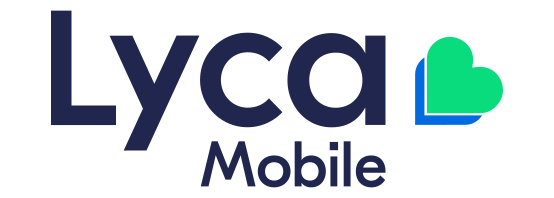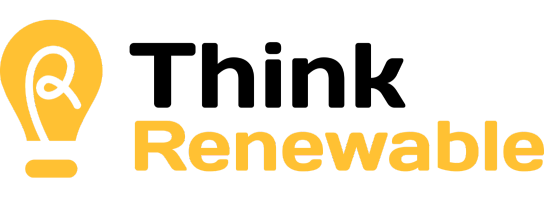Latest News

In today's rapidly evolving business landscape, customer experience has become more critical than ever. As digital platforms continue to transform the way we interact with brands, businesses must adapt to meet the evolving expectations of their customers. We recently hosted a panel event with industry leaders sharing lessons from their lived experience. We were joined by: Mareile Osthus – Co-Founder & CEO, Humii Blair Redfern – Head of Customer Support, Spaceship Heather Robinson – Customer Care Director, Lyka The Rise of Digital Platforms Traditional customer satisfaction metrics, like Net Promoter Score (NPS), often fall short in providing a comprehensive understanding of the customer journey. Digital platforms, however, offer a wealth of data that can be harnessed to gain deeper insights. This data and feedback on the customer journey should be shared during stakeholder meetings to illuminate pain points and identifying solutions. Companies like Humii are at the forefront of this revolution, using cutting-edge technology to analyse online customer behaviour and identify areas for improvement across the customer’s journey. By combining human analysis with data-driven insights, these platforms provide retailers with actionable recommendations to enhance their customer experience. “You can’t fix what you don’t know or measure.” – Mariele Osthus The Importance of Human-Centricity While technology plays a crucial role in understanding customer behaviour, it's equally important to maintain a human-centric approach. Empathy, personalisation, and a genuine understanding of customer needs are essential for building strong relationships and maintaining brand loyalty. Lyka, a dog food company founded by Anna Podolsky, exemplifies human centricity. By offering customisable plans and using high-quality, human-grade ingredients, Lyka demonstrates a deep commitment to the wellbeing of its customers and their furry friends. Navigating Economic Challenges It’s no surprise the current economic climate presents unique challenges for businesses and their customers. As consumers tighten their belts, it's more important than ever to provide exceptional value and support. Spaceship, a financial services company, is actively addressing these challenges by reducing fees and offering transparent pricing. By prioritising customer needs, providing clear communication and meeting them we’re they’re at financially, Spaceship is building trust and loyalty in a difficult economic environment. “It’s important to get your wider team on the tools to help evolve the CX experience. ” – Blair Redfern The Balancing Act of Technology with Human Touch The successful integration of technology and human touch is essential for delivering an exceptional customer experience. Automation can streamline processes and improve efficiency, but it will never replace human connection. Heather from Lyka emphasises the importance of strategic thinking when it comes to automation. By identifying areas where human touch is most valuable and empathy is needed, businesses can ensure that technology enhances rather than replaces the customer experience. “Define where human touch is needed and automate the other parts.” – Heather Robinson Talent and Culture Attracting and retaining top talent is crucial for delivering exceptional customer experiences. Creating a positive and inclusive work culture is essential for employee engagement and satisfaction. Spaceship has achieved a remarkably low staff turnover by investing in employee wellbeing, offering competitive benefits, and providing opportunities for growth and development. Mariele from Humii emphasises the importance of trust, autonomy, and flexibility in creating a supportive work environment. Emerging Trends and Predictions As the customer experience landscape continues to evolve, businesses must stay ahead of emerging trends. Automation, personalisation, and data-driven insights will play an increasingly important role in shaping the future of customer service. However, it's essential to remember that the human element remains indispensable. By combining technology with empathy and understanding, businesses can build lasting relationships and thrive in the competitive marketplace. Prioritising customer experience and service must be a company-wide mindset. Work-life balance is now the primary driver for employees, closely followed by salary and compensation concerns. Career Development and Job Security remain important factors, while the current unemployment rate stands at 4.2%, reflecting a still-tight job market. Although salaries have seen a slight 4% increase over the past year, growth appears to be slowing. Meet the Speakers Mareile Osthus – Co-Founder & CEO, Humii Humii is a startup that makes retailers’ online customer experience tangible, measurable, and trackable. Mareile, with over 20 years of retail experience and 15 years in e-commerce, has successfully scaled giants like Zalando and THE ICONIC. Her insights on optimising the customer journey were invaluable. Blair Redfern – Head of Customer Support, Spaceship Spaceship is an Australian financial services company dedicated to empowering people to invest in their futures. Prior to joining Spaceship, he gained valuable experience in operations and strategy roles at Plenti and Uber. Heather Robinson – Customer Care Director, Lyka Heather Robinson is the Customer Care Director at Lyka, where she champions the importance of personalised service and human connection in an increasingly tech-driven world. With experience from Menulog and ANZ, she brought a unique blend of expertise in customer care, making her insights particularly impactful. If you're looking to recruit top talent in CX or are a candidate seeking a role in this field, reach out to us! WOW Recruitment specialises in customer experience roles across call centres, operations, business support, and more.

The best talent in your industry might not be actively searching for a job, but that doesn’t mean they wouldn’t be interested in an opening at your organisation. After all, an opportunity’s an opportunity. This type of candidate search is called ‘passive recruitment’, and it differs pretty heavily from the more well-known ‘active recruitment’. Let’s talk about how they differ, and strategies to attract the best passive talent. Recruiting active vs. passive job candidates Who are active candidates? Active candidates are your classic job seekers. They already know they’re interested in another role, and are actively searching for a new employer. An active recruitment strategy is the common approach: writing job ads, posting them online and vetting candidates who apply. Who are passive candidates? Passive job seekers are candidates who don’t know that they’re candidates. They aren’t actively searching for a new role, and could be quite happy at their current employer. Still, for the right offer they might consider hopping over to your team. A passive recruitment strategy is proactive and slightly more challenging. It’s more of a head-hunting approach, identifying right-fit candidates from across the industry and building relationships with them over time. Many recruiters nurture these relationships even when there are no active job openings, just to stay in people's minds. Then, when a role eventually opens up, half the work is already done. The benefits of recruiting passive candidates Pitching your open role to a passive candidate might seem like a tricky sell, but there are a lot of benefits to finding these talented professionals – often outweighing the extra effort. Gain access to the best talent. Sticking to active recruitment can mean recruiting with blinders on, seeing only the people who are on the hunt. Broadening your search allows you to more accurately target right-fit professionals who you know are highly employable – after all, they are already employed! Reduce time-to-hire. When passive recruitment is done proactively, it may be quicker to fill openings with this strategy; by the time you need someone, you already have a number of prospective candidates sourced and nurtured. Less worker misrepresentation. Taking time to source ideal people ensures you already know a lot about them by the time they come to apply. This can lead to less worker misrepresentation, where people aren’t what their CV says they are. Lower competition. Active job seekers usually apply for multiple jobs at once. Meanwhile, passive job seekers aren’t on the market at all, so you may be the only one talking to them – reducing competition for their skills. Simple strategies to win passive talent 1. Brainstorm your perfect candidate Before starting the passive recruitment process, brainstorm who you actually want to find. This is a goal-setting exercise, giving you a ‘persona’ to target and an objective to measure success against. Some steps to consider: Identify current and future needs within the organisation, to better understand what skills gaps you'll be filling. Ensure you have a complete understanding of the job description, and all the necessary skills and qualifications. Build a persona which outlines the likely demographics, qualifications and other key features of the most likely candidates for any applicable roles. Who they are, where they work, what they know, their preferred salary, industry pain points... all of this may be relevant later. Gain buy-in (and sign-off) from relevant stakeholders within your business, especially whichever team leader is likely to manage this new hire. This will help ensure you’ve got all your details correct. 2. Strengthen your employer brand Your employer brand is your culture, values and mission, value proposition, and reputation. A strong employer brand is instantly recognisable, where professionals in your sector know your business to be a great place to work. The stronger the brand, the wider this reputation spreads. Having a strong employer brand is essential in passive recruitment, as right-fit candidates may engage with your brand long before you ever reach out to them – through your content, social media presence, events presence or word of mouth. If this contact has been positive, they may already have a high opinion of your organisation when you engage them for the first time. Learn more: How to Build an Authentic and Appealing Employer Image 3. Conduct a thorough candidate discovery process Finding right-fit passive candidates goes well beyond job boards. You’re looking for the perfect match, someone to engage and build a relationship with over time, and they might be hanging out in one of a few different places. These are some examples of common sources successful passive recruiters have used in the past to find and engage with the best passive talent. How many are already on your mind? Social media platforms (LinkedIn especially) Industry networking events Relevant online communities (i.e. forums, chat groups and other relevant websites) Industry magazines, blogs and publications, looking for interesting guest writers Company alumni (who can you win back?) Referrals from current employees, industry peers or company alumni Talent from previous hiring initiatives who are still in your database Universities and other relevant colleges, if appropriate for the role The persona(s) you created in step one should help you narrow down your search, and give you a benchmark to measure potential talent against. 4. Reach out and make contact It's most common to reach out to passive candidates via email or social media DM. Of course, if you’re on a mutual online community you might spark up conversation there or introduce yourself at an industry event. Tips to consider when reaching out to passive candidates: Always get to the point. Long-winded introductions are often ignored by busy professionals. Offer a clear value proposition. Focus on value during your pitch. You need to offer something that they don’t have in their current employment, otherwise they won’t see a benefit in jumping ship. We’ll come back to this in point five below. Try to build a rapport. This isn’t a job ad, it’s a blind date. Spark up conversation, keep things moving. This is an ideal opportunity to learn more about the candidate – we'll talk about that below too. Tailor every message. Always tailor your outreach to the platform and person. Mass emails might look like spam. Ask them for a response, even if they aren’t interested. We know they aren’t actively looking for a job, but we can still get a conversation flowing to learn more about them. Alternatively, they might be able to refer you to a trusted colleague who is ready, and who may make a similarly great candidate. 5. Build a relationship with each candidate A good relationship with passive candidates is crucial to earning their trust and, in future, winning their application. This isn't a transactional thing, it’s two people dating, vibing each other out, seeing what the other person is about. Is your opportunity as good as their current one? Is it better? Can they trust you? These are the questions going through their mind. Keep things simple at first, and work your way up You might not pitch an opportunity straight away, instead focusing on dialogue and building the relationship for the relationship’s sake – that’s the proactive part of this we mentioned earlier. Act fast if they show interest Passive candidates can get second thoughts, or waiver and lose interest. Ensure you get them an interview with the right stakeholders as promptly as possible if they show interest, putting some faces to names and offering more of your value proposition to the candidate. Remember, the more you can learn about them the better If you get more information, you might learn more about what they dislike in their current role, or what they’re looking for in a possible new one. This will help you position your company as having the thing that they don’t have, but want. Finally, always respect their time People are busy, and their time is precious. We can empathise with that by keeping things concise, being clear and never pushing someone beyond their comfort level. Even if a candidate is interested, they might not be available yet, and we have to recognise that in order to win them over time. Empathy is never a bad strategy in recruitment! Need help? Call us Passive recruitment can yield excellent results, but it isn’t as simple as active recruitment. That's where you need a dedicated recruitment professional in your corner, helping you with the tricky stuff so you can focus on interviews and choosing the best from the best. To learn more about how we might be able to help with your hiring needs, contact us today .

Rejection is a universal experience, especially in the competitive Australian job market. Rejection can absolutely be discouraging, but here at WOW, we want to assure you that a rejection doesn't define you, and it can actually be a valuable learning experience. While it's natural to feel disappointed when you don't land a job, the way you respond to this setback can shape your future success. Here’s how to deal with job rejection constructively and set the stage for future opportunities. Understanding Rejection It’s important to first understand that rejection, particularly in a job search, is rarely personal. Often, it simply reflects a mismatch between the role and the candidate rather than a flaw in the candidate themselves. Employers look for a very specific set of skills, experiences, and even personality traits that fit their organisational culture and business needs. Not being selected may mean that there was a better-suited candidate, but it doesn't imply that you are less capable or unworthy. It’s entirely natural to feel let down or upset, but you don’t have to keep these feelings to yourself. Open up to a friend, family member, or career counsellor—they can provide a sympathetic ear and the valuable perspective you might need. Sharing your thoughts can also lighten the emotional load and may lead to useful insights or strategies for moving forward. How to Respond to a Job Rejection Email Whether you receive a job rejection via email or phone call, it’s crucial not to take it personally or respond impulsively. If possible, give yourself some time to cool off and compose yourself before responding. Here’s a step-by-step guide on how to respond professionally and maintain a positive relationship with the potential employer: Acknowledge and Thank Them Start your reply by thanking the interviewer for the opportunity and their time. Expressing gratitude is not only polite but also keeps the door open for future interactions and demonstrates your professionalism. It can leave a lasting impression, potentially positioning you favourably for any upcoming opportunities that may arise. Ask for Feedback Politely ask if they can provide any feedback on your interview or application. This shows your commitment to improvement and can provide valuable insights for your future applications. Receiving and acting on this feedback can be a crucial step in refining your approach and increasing your competitiveness in the job market. Express Continued Interest Let them know that you are still interested in working with their company and would appreciate being considered for future roles that align with your skills and experiences. By expressing a continued interest, you establish yourself as a proactive and dedicated candidate who is genuinely invested in becoming part of their team. Keep It Brief and Professional While it's okay to express disappointment, keep your tone positive and professional. This leaves a good impression and fosters ongoing professional relationships. A constructive and courteous response also underscores your maturity and adaptability—traits that are highly valued by employers. How to Deal with Job Rejection After responding to a rejection email, the next step is to manage your emotions and use the experience as a growth opportunity. Here are some strategies to try: Reflect on the Experience Take an honest and thorough look at your interview performance. Are there areas where you could improve? Reflect on any weaknesses or gaps that may have been apparent during the interview process. For example, if you struggled to answer any of the questions, that might be something you need to brush up on for future interviews. Maintain Perspective Remember that many successful people have faced numerous rejections before achieving success. Each rejection is simply a step closer to your next opportunity. By reframing rejection as a necessary part of the path to achievement, you can maintain a positive mindset and perseverance in your pursuit of your career goals. Stay Positive and Resilient Keep a positive outlook, and don’t let rejection dampen your enthusiasm for your job search. Resilience is a key trait that employers value highly. Your ability to bounce back from setbacks demonstrates not only your determination but also your adaptability and strength of character. Expand Your Skills Consider whether additional training or experience could improve your job prospects. Sometimes, a rejection can direct you towards areas where you might need growth. Are there certifications, courses, or workshops that could enhance your expertise? By building on your skills, you’ll make yourself a more competitive candidate going forward. Network Actively Continue to build and engage with your professional network. Sometimes, the right job comes through a referral or an unexpected connection. Attend industry events, join professional associations, and participate in online forums or LinkedIn groups relevant to your field to increase your visibility and open doors to potential opportunities. How Do You Handle Rejection in a Sales Interview? Sales roles, in particular, often involve facing rejection directly, whether it's in securing deals or in the interview process itself. Here are some tailored tips for sales professionals: Stay Solution-Focused: In sales, every rejection can teach you something about your approach or pitch. Analyse what might have gone wrong and how you can adjust your strategy. Show Your Resilience: When responding to a rejection from a sales interview, emphasise your resilience and ability to handle rejection positively. This is a valuable trait in sales, and demonstrating that you can manage it professionally is compelling to potential employers. Practice and Prepare: Use each interview as a practice session to hone your sales techniques and responses. The more you practise, the more confident you’ll become. Remember, job hunting is a journey of self-discovery and growth. By embracing rejection as a learning opportunity and staying positive, you'll be well on your way to landing your dream job. Here at WOW Recruitment, we're here to support you every step of the way. The friendly team at our recruitment agency in Sydney offer personalised guidance and access to a network of top employers. So, the next time you receive a rejection email, don't despair. Consider it a stepping stone. Use the experience to learn, grow, and become a stronger candidate. And when you’re ready to get back out there, we’re here to help you land your dream role.

We're excited to welcome Jamie Rogers to the WOW team as Team Lead for our new Events and Experiential Marketing specialisation. With over 5 years of experience in recruitment, Jamie has specialised in marketing, events, and creative sectors. Holding a degree in Law and Politics from Cardiff University, Jamie brings a unique perspective to the recruitment industry. We sat down with Jamie to talk about his recruitment journey through the events and brand experience sectors in both the US and the UK, gaining insights into the challenges and opportunities that also define the current landscape of events in Australia. Welcome Jamie! We’re so happy to have you on board. Let’s start off with the big question first: what inspired you to join WOW Recruitment? When I met with Dan and Emily for the interview process, I just really liked the way they approached business and recruitment and felt that they would be good influences if I were to join the business. There’s a lot of potential at this particular recruitment agency, and that was also quite exciting as a drawcard for me. WOW already has a really solid foundation in events and marketing, but it still feels like there’s a lot of scope to grow this particular part of the team. You’ve had over 5 years of success recruiting in the events industry in the US and the UK—what skills have helped you find that success? Definitely adaptability for the most part. Generally, in the events industry, you find a really wide variety of personalities, people, and skills, and so each recruitment process for that sort of role or that sort of person has different challenges and requires a different approach. Your role and your focus can change pretty quickly from day to day. In a typical week, I might be recruiting a creative one day, an event manager the next, and then by the end of the week I'm recruiting a salesperson, so I need to stay adaptable and flexible. What do you see as some of the biggest challenges in the event recruitment space today? There’s definitely been a shortage of people post-pandemic. Although we’re a few years past the worst of it now, we’re still seeing the effects of it. The industry really suffered as people, particularly in the production and creative side of things, went to work in other sectors where they could apply their transferable skills. Unfortunately, a lot of those skilled people haven't come back. Another challenge that I’ve seen in the events space relates to diversity and inclusion. Particularly in senior roles, it tends to be pretty heavily male-dominated, and it tends to lack cultural diversity. In the UK, people have been pushing for change, with many organisations being set up to try and tackle that issue. In Australia, there has been some headway with examining gender diversity in the business events community specifically, with the ‘ Advancing Women in Business Events ’ study conducted by Business Events Sydney (BESydney) and PCMA, so that’s definitely something that’s front of mind here too. Given these challenges, how can employers entice talent back to the industry? What do you think they can do to attract the right people? Because working in the events industry often requires long hours and weekend work, a lot of the time people are looking for ways to get some kind of work-life balance back. I think that will be a big thing for employers to consider in terms of how they attract people. Salary is nice, of course, but I think it’s more about the other things that they can offer—like time off in lieu and hybrid working. And flexibility is especially enticing in terms of hours, especially if you've just come off the back of a big event. If an event agency wants to work with you, what can they expect? What’s your process? One thing I always like to do is actually go and visit their office and see them in person. You can do a video call, and you can sort of get a feel for the place, but to really pick up on the culture and what the office environment is like, it's so much easier to do that in person. The biggest frustration I’ve seen people have with recruiters in general is that a lot of them come into a role and have been doing it for six months and then they move on, so they don’t really get the chance to learn the ins and outs of the industry. Someone who's new might look at the CV of a project manager and think that's a really good CV, but they often don’t dig deeper into getting to understand a little bit more about the person. My experience allows me to take a different, more thorough and nuanced, approach. Can you tell us more about this approach? If an events agency comes to me with a role, be that a project manager or a 3D designer or whatever it is, I can generally consult with them on previous experiences because I've recruited that role for a similar business before. With me, an employer gets more of an actual consultative approach. I can understand what they're looking for, and if there's something that doesn't sound quite right or maybe an area that they might be able to slightly tweak in their search, I’ll work on that for the benefit of all parties. When hiring events employees, what are some of the key skills you look for? I think the biggest one would be a real love of the industry, because it’s not for the faint-hearted! Potential candidates need to understand that it can be pretty hard work, and if they don't love the industry, they're probably going to find it really challenging to stay motivated. Something else I look for is whether a candidate is sociable, personable, and easy to talk to. The events industry is generally set up for people who are quite sociable—it's really not an industry for those who shy away from meeting new people. What kind of roles are you recruiting for at the moment? Anything you might find across the events sector, really. I would break it down into a few categories, including Event Production, Event Delivery, Creative and Design, Client Services, New Business and Sales, and then Strategy and Digital. The Events & Experiential Marketing page on WOW’s website will give you a full overview of the kinds of roles I’m actively recruiting for for our events agency clients. How can people get in touch with you? If you’re looking to hire talent for your next event, or you’re after a role in the events industry in Australia, I’d love to chat! You can get in touch with me at jamie.rogers@wowrecruitment.com.au .

Retaining top talent is more crucial than ever for Australian businesses. With the evolving expectations of the workforce and the constant threat of competitors poaching your best employees, you might be wondering how to increase employee retention. That’s where a strategic approach to employee retention is essential. Fortunately, there are plenty of proven strategies that you can implement to create a work environment that fosters loyalty and minimises turnover. These include building a positive work environment, offering competitive benefits packages, actively engaging employees in meaningful ways, and demonstrating strong leadership. Why Are Your Employees Leaving? Employees can exit a business for any number of reasons, but often a desire for better compensation, clearer paths for career progression, and a healthy work-life balance come out on top. Dissatisfaction with leadership or a negative company culture can also be significant drivers of employee turnover. Given that Australian job seekers in particular are highly mobile, with research from SEEK indicating that 37% were considering a move within the last 6 months of 2023, it’s important to create a work environment that prioritises competitive remuneration, professional development opportunities, well-being initiatives, and strong leadership. Quiet Quitting A common result of dissatisfaction in the workplace is a phenomenon that’s emerged over the last couple of years called ‘quiet quitting.’ Quiet quitting refers to employees who stick to their core job duties but withdraw from going above and beyond. They limit their efforts at work, consciously avoiding extra tasks that exceed their defined responsibilities. This shift often stems from feelings of being underappreciated, undercompensated, or burnt out. As workers seek better work-life balance and mental health, many are opting to ‘quietly quit’ rather than overextend themselves or leave their positions outright. This trend underscores the importance for employers to foster supportive and engaging workplaces. How Do You Retain Employees? Talent Retention Strategies that Work According to our recent Job Satisfaction and Wage Trends Report , what matters most to employees are their salary and benefits, their ability to make a positive impact, and achieving a good work-life balance. We also discovered that employee retention is closely linked to job satisfaction—those who express their love for their job are overwhelmingly more likely to have been in their role for three to five years, while those ready to quit usually want to leave sooner than that. To significantly reduce employee turnover and retain top talent in your business, here are some of the most successful retention strategies to try. Create a Positive Work Culture The foundation of employee retention is undoubtedly a positive work environment. This encompasses not just the physical space but also the culture, the values, and the way people interact within an organisation. A positive work environment is characterised by mutual respect, open communication, and a sense of belonging. You can create a positive work culture by: Encouraging Open Communication Create channels for open dialogue to ensure employees feel heard and valued. This could be through regular town halls, anonymous feedback systems, or open-door policies with management. Promoting Work-Life Balance Show understanding and flexibility towards employees’ needs outside of work. A recent report from the University of Melbourne found that 75% of employees under the age of 54 reported that they would leave a job that didn’t allow for flexibility. Flexible working hours, the option to work remotely, and mental health days are examples of practices that contribute to a supportive work environment. Recognising and Rewarding Contributions Make sure employees feel appreciated for their hard work and achievements. Recognition programs, whether through awards, bonuses, or simple shout-outs in team meetings, can boost morale and loyalty. Offer Competitive Benefits To attract and retain top talent, offering competitive benefits is key. However, competitive does not only refer to salary. While fair and attractive compensation is essential, today's employees look for benefits that enhance their quality of life and offer security for their future. Consider offering some of the below to increase talent retention: Tailored Benefits Packages Employees have diverse needs, and that’s why you should be tailoring your benefits packages to suit different life stages and priorities—from health insurance and superannuation to childcare support and education allowances. Professional Development Opportunities Investing in your employees’ growth not only benefits them, but it also benefits your organisation. Consider offering access to training, courses, certifications, and pathways for career progression within your company. Wellbeing Programs Employee wellbeing directly impacts productivity and satisfaction. Initiatives like fitness memberships, wellness apps, or even in-office health and wellness activities can make a significant difference to the productivity and longevity of your employees. Engage Employees in Meaningful Ways Engagement is the emotional commitment an employee has to their organisation and its goals. Engaged employees are not just there for the paycheck; they believe in what they are doing and are committed to the organisation's success. Engaging your workforce in meaningful ways involves: Empowering Employees Empowerment can boost your employees’ investment in their work and the company. Be sure to give them a sense of ownership and responsibility, encourage innovation, and allow them to bring their ideas to the table. Building a Strong Team Culture Team-building activities, social events, and collaborative projects can help strengthen bonds between employees, making them feel part of something bigger and fostering a sense of community within your organisation. Communicating a Clear Vision Sharing successes and challenges openly can help employees see the impact of their work, increasing their engagement and loyalty. It’s also important to ensure that every employee understands how their work contributes to the company’s objectives. Demonstrate Strong Leadership Leaders play a pivotal role in employee retention. Leaders who are approachable, empathetic, and supportive can inspire loyalty and dedication and can identify and address issues before they lead to dissatisfaction. Here’s how strong leadership plays a crucial role in talent retention: Inspiring Trust and Confidence Leaders who are transparent, ethical, and consistent in their actions inspire trust among their team members. When employees have confidence in their leaders, they’re more likely to feel secure and committed to the organisation. Providing Support and Development Exceptional leaders are committed to the growth and development of their employees. By offering mentorship, feedback, and opportunities for professional development, leaders can help employees advance in their careers without looking elsewhere. Creating a Vision and Purpose Strong leaders articulate a clear vision for the company. By aligning individual goals with the company’s purpose, leaders can foster a deep sense of belonging and dedication among employees. A Happy Employee is a Loyal Employee Now that you know how to keep employees happy, you can create a dynamic workplace that attracts and retains top talent. Remember, happy, engaged employees are more productive, creative, and less likely to leave for greener pastures. A successful retention strategy is an ongoing process. By actively listening to your employees, adapting your approach, and creating a truly positive work environment, you can turn your company into the ultimate dance partner, attracting and retaining top talent for the long haul. Let's not forget, a strong employer brand also goes a long way. Positive employee experiences translate into positive online reviews and word-of-mouth recommendations, making it easier to attract new talent in the future. WOW Recruitment is a recruitment agency that’s passionate about helping Australian businesses build successful teams. We offer a range of services, from talent acquisition to employer branding, to help you create a workplace environment where top talent thrives. Contact us today to find out more.




















